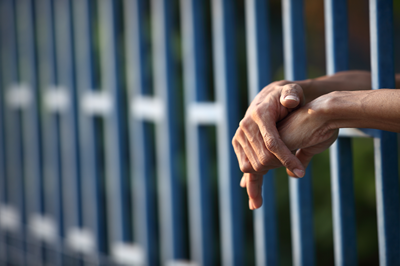Correctional officers across the United States too easily resort to “unwarranted and punitive” use of force to control prisoners with mental illness, according to a recent report issued by Human Rights Watch.
“[T]he misuse of force against prisoners with mental health conditions is widespread and may be increasing,” concluded the report, written by Jamie Fellner, senior advisor in the U.S. Program of Human Rights Watch (HRW). “[S]taff at times have responded with violence when prisoners engage in behavior that is symptomatic of their mental health problems, even if it is minor and nonthreatening misconduct such as urinating on the floor, using profane language, or banging on a cell door.”
An estimated 360,000 people with serious mental illness can be found today in the more than 5,000 jails and prisons in the United States.
“Overall, the quality of care in correctional facilities is poor,” forensic psychiatrist Stephen Hoge, M.D., who was not involved with the HRW report, told Psychiatric News. “Jails and prisons are understaffed, correctional officers are poorly trained in mental health issues, and there are far too few psychiatrists to treat patients.”
Fellner acknowledged that prisons are tough places to live and work. Corrections officers depend on “regimentation, control, and an insistence—backed up by discipline and force—on unquestioned, immediate prisoner obedience to rules and orders,” he said.
Prisoners with psychiatric disorders, such as schizophrenia, bipolar disorder, or major depression, can find it challenging to adapt to such an environment or respond to the demands of the officers. When they don’t react as officers wish, they may be doused with pepper spray, shocked with electrical stun guns, placed in restraints for days, or seriously injured by correctional staff, the HRW report noted.
Abuses have sometimes been taken to court by individuals, but that does not lead to systemic change, wrote Fellner.
Punishing correctional officers might seem tempting, but they often work with limited resources, limited training, and not much oversight, said Robert Trestman, M.D., Ph.D., a professor of medicine, psychiatry, and nursing at the University of Connecticut and a specialist on corrections psychiatry. “They need better training and supervision, and right now that’s not happening.”
At the same time, mental health treatment for inmates is frequently inadequate at best. “Psychiatrists are often hired to write prescriptions and do not have adequate input into management of mental health care,” said Hoge. “Absent institutional support, they do not have adequate time or resources to assess quality, identify problems, and implement change.”
The report recommends safer, more humane conditions in jails and prisons for all inmates and improved access to better mental health services for those with mental illness (see box on page 12).
To create safer correctional institutions, the report calls for a reduction in the number of people with mental illness confined in prisons and jails in the first place through the expansion of diversion programs and community treatment options, the end to solitary confinement for people with mental disabilities in jails and prisons, and improved discharge planning to connect former inmates to community care to reduce recidivism.
The report also recommends the passage of the Comprehensive Justice and Mental Health Act of 2015 and better coordination among all elements of the criminal justice and mental health systems.
Reducing the number of people with mental illnesses in U.S. jails is a major goal of APA. To that end, APA is participating in a new initiative, Stepping Up, whose partners include the National Association of Counties and the Council of State Governments Justice Center with support from the U.S. Department of Justice’s Bureau of Justice Assistance (
Psychiatric News, June 5). ■
The Human Rights Watch report “Callous and Cruel: Use of Force Against Inmates With Mental Disabilities in U.S. Jails and Prisons” can be accessed
here.

